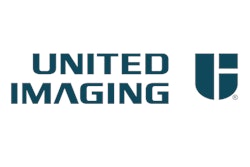
For the first time ever, the number of CT procedures in the U.S. conducted with no contrast media exceeded those conducted with contrast in 2019, according to IMV Medical Information Division's "2019 CT Market Outlook Report."
 Lorna Young of IMV Medical Information Division.
Lorna Young of IMV Medical Information Division.IMV estimates that 52% of the 91.4 million CT procedures conducted in the U.S. in 2019 were performed without contrast media, which is up from 33% of the 76 million procedures conducted in 2007.
Even more compelling, while the total number of CT procedures conducted with contrast media has been relatively stable since 2007, the volume of procedures using no contrast media more than doubled, from an estimated 22.6 million to 47.3 million over the same time period.
Several drivers may have influenced the relative mix of CT procedures with and without contrast, including the following:
- The improved ability of CT scanner technology to provide high-resolution images without using contrast for certain procedures
- Policies from the U.S. Centers for Disease Control and Prevention (CDC) and third-party payors that have bundled the payment for procedures conducted with and without contrast, thereby reducing reimbursement to providers for such procedures
- Provider and public concerns with patient satisfaction and side effects when using CT contrast media
Over the past decade, the U.S. Centers for Medicare and Medicaid Services (CMS) has bundled payments for certain procedure codes, bundling the less extensive exam with procedure codes for more extensive exams performed at the same anatomic location, for the same day, by the same provider, and for the same beneficiary.
For instance, while three separate current procedural terminology (CPT) codes are available for CT abdomen procedures -- without contrast, with contrast, and without and with contrast -- the latter is considered to be the most extensive exam. One impact on CT departments is that they have received decreased payments for CT procedures conducted without and with contrast, which has put added pressure on their bottom line.
While such bundled procedure codes have been in use for a decade, in February 2019 the CMS Recovery Audit program further renewed the agency's focus on recovering payments originally made to providers who may have "unbundled" their claims by reporting the two less extensive codes separately instead of using the bundled procedure code. CMS said such payments would be recovered as overpayments.
For IMV's CT survey respondents, the cost of contrast media and related supplies, such as power injector syringes, is of concern. One respondent commented, "I believe the pricing for consumables is getting higher with each passing year, forcing facilities to look for alternatives." Other respondents mentioned specific alternatives, such as generic syringes, prefilled syringes that are less expensive, and lower cost group pricing contracts.
The decreased use of CT contrast is rated as a relatively high CT department priority in IMV's 2019 survey by 43% of the CT respondents who gave high ratings of 4 or 5 to "reduce usage of CT contrast media" (on a 1 to 5 priority rating scale). This is up from 32% of the respondents in IMV's 2017 survey.
This trend has implications for the entire workflow associated with administering oral and injectable contrast agents -- affecting CT scanner manufacturers, CT contrast media suppliers, CT power injector manufacturers, and the IT integration of contrast media utilization reporting. Regarding their future needs relating to the use of contrast media, the respondents to the IMV survey gave suggestions that encompass their entire workflow. Respondents stated they need the following:
- Advances in CT hardware and software technology to provide high-quality images while reducing the need for using contrast media (as well as reducing radiation dose to patients)
- Integration between the CT power injector and CT scanner regarding contrast utilization, such as when differing kVps are used
- Continued development of oral contrast agents that are less reactive and better tasting to the patient
- Contrast management based on patient weight
- Improved IT capabilities to integrate cumulative radiation and contrast dose tracking into their workflow, and when reporting to their PACS and electronic medical record systems
Lorna Young is the senior director of market research at IMV Medical Information Division, part of Science and Medicine Group.
IMV's "2019 CT Market Outlook Report" explores market trends in U.S. hospitals and imaging centers, including procedure volume, manufacturer-installed base features and share, the use of OEM versus third-party service providers, purchase plans, brand loyalty, contrast utilization/budgets, CT power injectors, and site operations characteristics. The report is based on responses from 402 radiology/CT administrators who participated in IMV's nationwide survey in August-September 2019. Their responses have been projected to the IMV-identified universe of hospitals and imaging centers in the U.S. that use fixed CT scanners, and the report provides market forecast scenarios addressing the CT unit market in the U.S. for 2019-2023. Vendors covered in this report include Bayer/Medrad, Bracco Imaging, Canon/Toshiba Medical Systems, GE Healthcare, Guerbet, Hitachi Healthcare, Neusoft, Philips Healthcare, Samsung Healthcare, Siemens Healthineers, and United Imaging.
For information about purchasing IMV's "2019 CT Market Outlook Report," visit the corporate website at www.imvinfo.com or call 703-778-3080, ext. 1033, to speak with a representative.
Disclosure: IMV Medical Information Division is a sister company of AuntMinnie.com.




















